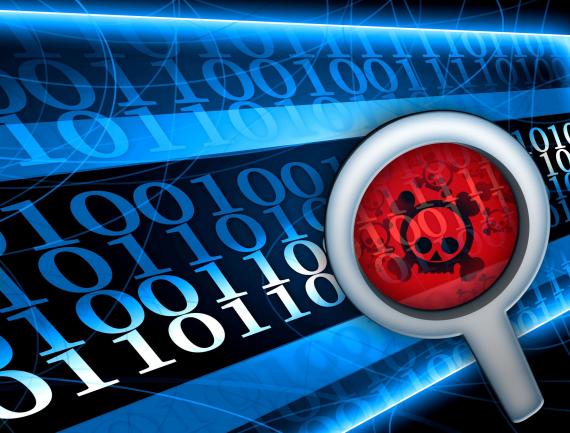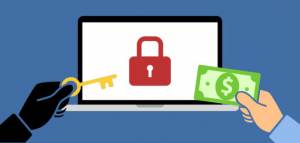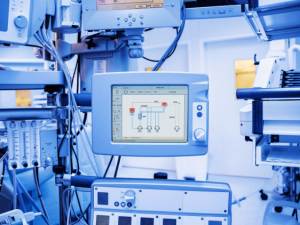Zupełnie inny wirus
Krótki przegląd trwającej walki o powstrzymanie fali cyberataków w sektorze opieki zdrowotnej.

healthcare-informatics.comOprócz wywrotowego hakowania w świecie biznesu, gdzie prywatne informacje mogą zostać naruszone, a poufne dane firmowe mogą zostać skradzione, środki cyberbezpieczeństwa są obecnie stosowane w celu zniwelowania skutków hakowania przez podmioty zagraniczne, używane jako broń polityczna. Jest to coraz poważniejszy problem globalny, który wymagał wdrożenia zaawansowanych metodologii cyberbezpieczeństwa w celu przeciwdziałania coraz bardziej wyrafinowanym możliwościom hakerów w zakresie podważania tych właśnie systemów.
„W ostatnich latach cyberbezpieczeństwo stało się coraz większym problemem w opiece zdrowotnej, a głośne cyberataki i luki w zabezpieczeniach powodują zakłócenia dla ubezpieczycieli, szpitali i producentów urządzeń medycznych. Stawka dla pacjentów jest również wysoka, ponieważ dane pacjentów mogą zostać utracone lub zmienione, usługi szpitalne przerwane lub pacjenci mogą zostać skrzywdzeni przez ataki na określone urządzenia…” 1
Interwencja Rządu w Walki z Cyberprzestępczością

The rapid digitization of the healthcare industry makes this sector particularly vulnerable to cyber attack and this fact has not been lost on the US Congress. The House Energy and Commerce Committee recently convened to address cyber security in the health sector. Information Sharing and Analysis Centers (ISACS) may be key in providing enhanced security for healthcare providers and in thwarting efforts of would-be cyber attackers.
Through the interactive efforts of the 24 organizations that comprise the National Council of ISACs (NCI), great efforts are being made to “maximize information flow across the private sector critical infrastructures and with government. Critical infrastructure sectors and subsectors that do not have ISACs are invited to contact the NCI to learn how they can participate in NCI activities.”2
Oczywiście jest to herkulesowe przedsięwzięcie, aby wzmocnić partnerstwo między podmiotami publicznymi i prywatnymi w opiece zdrowotnej w odniesieniu do cyberbezpieczeństwa, biorąc pod uwagę niezliczone branże i agencje rządowe, które odpowiadają za regulację i dostarczanie wspomnianej opieki zdrowotnej. Kongres został zachęcony do zapewnienia ulg podatkowych i innych zachęt, aby zachęcić firmy do zaangażowania się w trwające wysiłki ISAC.
Słabe uczestnictwo utrudnia wdrażanie cyberbezpieczeństwa
Niestety, niskie wskaźniki uczestnictwa wśród placówek opieki zdrowotnej są uporczywym problemem w trwających wysiłkach na rzecz wdrożenia skutecznych środków cyberbezpieczeństwa w całym sektorze. Według Terry’ego Rice’a, wiceprezesa ds. zarządzania ryzykiem IT i dyrektora ds. bezpieczeństwa informacji w Merck, „firmy mogą wahać się przed udostępnianiem informacji w ramach ISAC, jeśli obawiają się, że informacje te nie pozostaną poufne dla jej członków”.3
“I think the most shocking statistic was really the fact that 40% of the individuals at the top of an organization–executives like CEOs and CIOs, and even board members–didn’t feel personally responsible for cybersecurity or protecting the customer data.” Dave Damato, Chief Security Officer at Tanium, on CNBC’s Squawk Box, mówiąc o cyberbezpieczeństwie w branży opieki zdrowotnej 13
Wysokie koszty cyberprzestępczości w opiece zdrowotnej

Oprócz oczywistego zagrożenia związanego z naruszeniem danych pacjentów i innymi przypadkami kradzieży danych, awarie cyberbezpieczeństwa są niezwykle kosztowne, rzędu $6,2 miliarda rocznie, zgodnie z projektem badawczym przeprowadzonym w 2016 r. przez Poneman Institute. Spostrzeżenia ujawnione w ich badaniach wykazały, że „prawie 90 procent organizacji opieki zdrowotnej… doświadczyło naruszenia danych w ciągu poprzednich dwóch lat. Czterdzieści pięć procent miało więcej niż pięć naruszeń danych w tym okresie, a średni koszt cyberataku wyniósł łącznie $2,2 miliona. Dane zawarte w elektronicznej dokumentacji medycznej (EHR) są często cytowane jako powód, dla którego opieka zdrowotna jest tak atrakcyjnym celem w oczach hakerów”.4
Choć ludzie lubią wierzyć, że ich informacje medyczne są w posiadaniu gabinetu lekarskiego lub szpitala, często tak nie jest. Trwająca digitalizacja dokumentacji medycznej jest kosztownym przedsięwzięciem dla branży opieki zdrowotnej. Zabezpieczenie wszystkich tych informacji to kolejny monumentalny wydatek, a czasami ta część równania cyberbezpieczeństwa jest zaniedbywana w interesie oszczędności kosztów lub po prostu ze względu na skalę całego przedsięwzięcia.
Lukratywny charakter cyberkradzieży w opiece zdrowotnej

Oczywiście, dokumentacja medyczna jest gorącym towarem na czarnym rynku i może przynieść ogromne zyski stronom starającym się uzyskać dane osobowe, adresy rozliczeniowe i numery kart kredytowych. Hakerstwo może być bardzo dochodowym przedsięwzięciem. Rozważmy ten przykład. „Hakerzy ukradli ponad 2,2 miliona dokumentacji medycznej z 21st Century Oncology z siedzibą w Fort Myers na Florydzie w marcu 2016 r. Miesiąc później ktoś ukradł laptopa z 205 748 niezabezpieczonymi dokumentami medycznymi z Premier Healthcare, LLC”. 5
Pojawienie się oprogramowania typu ransomware
Ransomware to nowe pojęcie dla większości ludzi, którzy zapoznali się z ostatnimi atakami WannaCry na całym świecie, paraliżującymi krytyczne systemy infrastrukturalne i wymuszającymi znaczne okupy finansowe od tych, którzy padli ofiarą lęku i potencjalnej utraty danych charakterystycznych dla takich ataków. Branża opieki zdrowotnej jest szczególnie podatna na ataki ransomware.
„Szpitale są idealnym celem dla tego rodzaju wymuszeń, ponieważ zapewniają krytyczną opiekę i polegają na aktualnych informacjach z dokumentacji pacjentów. Bez szybkiego dostępu do historii leków, dyrektyw chirurgicznych i innych informacji, opieka nad pacjentem może zostać opóźniona lub wstrzymana, co sprawia, że szpitale są bardziej skłonne zapłacić okup niż ryzykować opóźnienia, które mogą skutkować śmiercią i pozwami sądowymi”. 6
Oprogramowanie ransomware blokuje komputer i uniemożliwia dostęp do danych, chyba że sprawcy zostanie zapłacony okup. Zazwyczaj płatność ta jest dokonywana w formie bitcoinów. W większości przypadków ustalany jest limit czasowy na zapłacenie okupu, w przeciwnym razie dane komputera zostaną zniszczone. Chociaż większość poszkodowanych stron nie płaci okupu, robi to wystarczająco dużo osób, aby uczynić z tego szczególnie dochodowe przedsięwzięcie przestępcze.

Branża opieki zdrowotnej jest podatna na ataki ransomware, ponieważ, co zaskakujące, wiele szpitali podjęło niewystarczające kroki, aby zapobiec naruszeniom cyberbezpieczeństwa. Zamiast tego większość szpitali skupiła swoją główną troskę na przestrzeganiu przepisów HIPAA i federalnych wytycznych, aby zapewnić bezpieczeństwo informacji o pacjentach. Ostatecznie większość pracowników w służbie zdrowia po prostu nie jest wystarczająco dobrze przeszkolona, aby rozpoznawać i zapobiegać cyberatakom, zanim do nich dojdzie. Nawet gdy wdrożono odpowiednie szkolenia i środki cyberbezpieczeństwa, przechytrzenie sprawców, którzy stale wyprzedzają grę, stanowi ciągłe wyzwanie.
Urządzenia IoT również są zagrożone
Aby dodać powagi obecnej sytuacji, cyberataki mogą dotyczyć nie tylko komputerów, ale również urządzeń do nich podłączonych. Narzędzia medyczne, monitory pracy serca i glukozy to tylko kilka przykładów urządzeń podatnych na cyberataki. Wiceprezydent Dick Cheney słynnie zażądał, aby jego rozrusznik serca był zabezpieczony przed cyberatakami, aby osoby o złych zamiarach nie manipulowały zdalnie funkcją jego urządzenia. Szczerze mówiąc, ingerencja w takie urządzenia może być śmiertelna dla pacjentów, którzy są od nich zależni, aby żyć.

Jako przykład hakowania medycznego: „W jednym z obecnie stosowanych exploitów, znanym jako MedJack, atakujący wstrzykują złośliwe oprogramowanie do urządzeń medycznych, aby następnie rozprzestrzenić je w sieci. Dane medyczne odkryte w tego typu atakach mogą być wykorzystane do oszustw podatkowych lub kradzieży tożsamości, a nawet do śledzenia aktywnych recept na leki, umożliwiając hakerom zamawianie leków online, a następnie sprzedawanie ich w dark webie”. 7
„No patients have, as far as I know, been killed due to a hacked pacemaker, but patients have been killed due to malfunction[s] of their medical devices, configuration errors and software bugs. This means that security research in the form of pre-emptive hacking, followed by coordinated vulnerability disclosure and vendor fixes, can help save human lives.” Marie Moe, Security Researcher with SINTEF, in “No dalej, hakerzy. Złamcie mi serce” (Przewodowy)13
FCC zasugerowała teraz, aby dostawcy urządzeń medycznych IoT wbudowali środki bezpieczeństwa w produkty, które produkują; kluczowe słowo jest sugerowane. W rzeczywistości wdrażanie obowiązkowych praktyk i wymagań bezpieczeństwa dla tych producentów jest czasochłonnym wysiłkiem. Ponadto sieci przypisane do przekazywania danych między urządzeniami i bazami danych również mają krytyczną potrzebę wdrożenia i monitorowania cyberbezpieczeństwa.
Nowy prezydent, nowy porządek

Wiele spekulowano na temat tego, jak administracja Trumpa zajmie się kwestiami cyberbezpieczeństwa. 11 maja 2017 r. prezydent podpisał rozporządzenie wykonawcze, które nakazywało przegląd ogólnych zdolności kraju do zwalczania przestępczej cyberaktywności. Rozporządzenie nakłada ciężar odpowiedzialności za cyberbezpieczeństwo na agencje federalne, które miały przeprowadzać oceny ryzyka i składać odpowiednie raporty w ciągu 90 dni. Dodatkowe raporty badające zagrożenia dla infrastruktury krytycznej miały zostać złożone sześć miesięcy po wydaniu rozporządzenia prezydenta.
„Rozporządzenie wzywa do przeglądu zagrożenia, jakie stwarzają botnety, których celem są strony internetowe z automatycznie generowanym ruchem spamowym. Botnet Mirai był odpowiedzialny za znaczące przerwy w działaniu Internetu w zeszłym roku. Ale Access Now twierdzi, że zarządzenie powinno również dotyczyć procesu ujawniania luk w zabezpieczeniach przez rząd i jego reakcji na naruszenia danych”.
Oceny ryzyka
Plany odzyskiwania po awarii i plany awaryjne
Dedykowane zespoły Sec-Op
Kontrola partnera biznesowego/dostawcy
Lepsze szkolenie pracowników
Obrona warstwowa
Poprawiona higiena technologiczna
Partnerstwa w zakresie cyberbezpieczeństwa
Lepsze oprogramowanie
Konsultanci kryminalistyczni
Nie ma ogólnego środka zapobiegawczego ani środka, który mógłby wyeliminować ryzyko cyberataków. Zamiast tego szpitale, kliniki i prywatne praktyki mogą jedynie mieć nadzieję na współpracę i zarządzanie ciągłymi ryzykami w interesie ochrony prywatnych informacji i ogólnego bezpieczeństwa swoich pacjentów. Jednocześnie, mamy nadzieję, że ciągły postęp technologiczny zajmie się podatnością urządzeń medycznych i sieci komputerowych.
Te wysiłki mające na celu ograniczenie potencjalnie katastrofalnych skutków cyberprzestępczości w sektorze zdrowia i poza nim wykraczają daleko poza Stany Zjednoczone. Obecnie podejmowane są globalne wysiłki mające na celu powstrzymanie fali cyberataków na całym świecie lub przynajmniej zminimalizowanie wpływu tego, co wydaje się być niekończącym się wysiłkiem cyberprzestępców, aby infiltrować systemy opieki zdrowotnej i siać spustoszenie i wymuszać, gdziekolwiek to możliwe, w jakimkolwiek nikczemnym celu.
Polityczne motywy ataków cybernetycznych

Biorąc pod uwagę wrogi klimat polityczny panujący między Koreą Północną a praktycznie każdym innym państwem cywilizowanego świata, nie dziwi fakt, że państwo to wymieniane jest jako prawdopodobny sprawca niedawnych ataków ransomware WannaCry i innych niecnych działań podjętych z pobudek politycznych i w celu wymuszenia pieniędzy.
„Badacze zajmujący się cyberbezpieczeństwem znaleźli techniczne wskazówki, które ich zdaniem mogą łączyć Koreę Północną z globalnym cyberatakiem „ransomware” WannaCry, który… zainfekowano ponad 300 000 maszyn w 150 krajach. Symantec and Kaspersky Lab said … some code in an earlier version of oprogramowanie WannaCry pojawił się również w programach używanych przez Grupę Lazarus, którą badacze z wielu firm zidentyfikowali jako operację hakerską prowadzoną przez Koreę Północną”. 10
Nie wszyscy eksperci wierzą, że atak ransomware WannaCry był motywowany względami finansowymi. Niektórzy, jak Matthew Hickey z brytyjskiej firmy konsultingowej Hacker House, uważają, że sprawcy chcieli po prostu „spowodować jak największe szkody”. Tak było z pewnością w krajach, które zostały najbardziej dotknięte atakiem, w tym w Indiach, Tajwanie, Ukrainie i Rosji.
Niektórzy, jak rosyjski przywódca Władimir Putin, obwinili NSA za to, co, jak twierdził, było ich rolą w atakach ransomware WannaCry. Uważa się, że technologia WannaCry „opiera się na wyciekłym narzędziu wykorzystującym lukę w zabezpieczeniach systemu Windows, która najwyraźniej pochodzi od NSA. „Jesteśmy w pełni świadomi, że dżiny, w szczególności te stworzone przez tajne służby, mogą zaszkodzić swoim autorom i twórcom, jeśli zostaną wypuszczone z butelki” — powiedział Putin w Pekinie, według rosyjskiej państwowej agencji informacyjnej TASS.” 11
“This next president is going to inherit the most sophisticated and persistent cyber espionage cultures the world has ever seen, He needs to surround himself with experts that can expedite the allocation of potent layers of next generation defenses around our targeted critical infrastructure silos.” James Scott, Senior Fellow, Institute for Critical Infrastructure Technology 14
Trendy w walce z cyberatakami w sektorze ochrony zdrowia
Oczywiste jest, że zagrożenie naruszeniami cyberbezpieczeństwa we wszystkich sektorach biznesu i przemysłu nie zmniejszy się. W opiece zdrowotnej będzie trwała i nieustanna potrzeba ulepszania technologii i ogólnej czujności, aby uniknąć katastrofalnych incydentów w przyszłości. Pojawiają się pewne trendy ochronne, które można postrzegać jako przyszłość odstraszania cyberprzestępczości w opiece zdrowotnej.
At the top of the list is an increasing migration to cloud based information security tools. This move “will allow the tools to be updated more dynamically to address zero day type malware. This move to the cloud should ultimately make it more economical to make these tools available to all healthcare providers – large and small.” 12

Ponadto branża opieki zdrowotnej będzie zmuszona do zachęcania do zwiększonego udostępniania informacji i współpracy w sieciach opieki zdrowotnej i między placówkami. Ten wzajemny wysiłek w zakresie cyberbezpieczeństwa będzie trudny do zainicjowania, ponieważ instytucje opieki zdrowotnej są często dość odizolowane z natury. Przewiduje się, że to udostępnianie informacji wykroczy poza opiekę zdrowotną i obejmie wiele sektorów biznesu i wysiłków instytucjonalnych w celu zminimalizowania ryzyka dla wszystkich zaangażowanych.
Ostatecznie wysiłki mające na celu zniwelowanie zagrożeń związanych z naruszeniami bezpieczeństwa cybernetycznego, ransomware i nowymi i pojawiającymi się zagrożeniami w tej dziedzinie sprowadzą się do edukacji i świadomości na wszystkich szczeblach pracowników w opiece zdrowotnej i poza nią. Kiedy wszyscy będą dobrze wykształceni i będą dostrzegać ostrzegawcze sygnały cyberzagrożeń oraz to, co mogą zrobić, aby być częścią nadrzędnego wysiłku na rzecz powstrzymania fali cyberataków, branża opieki zdrowotnej i wszyscy obrońcy cywilizowanego udostępniania informacji na całym świecie będą nadal podejmować znaczące kroki w kierunku ograniczenia szkodliwych skutków cyberprzestępczości we wszystkich sektorach.
AI-Driven Website Security: WP Safe Zone for Healthcare
In the healthcare sector, where sensitive patient data is a prime target for cyberattacks, robust website security is critical. The rise of AI in cybersecurity is providing powerful solutions to combat these threats. One standout example is the WP Safe Zone plugin, tailored for WordPress websites.
WP Safe Zone utilizes artificial intelligence to protect websites from malware, brute force attacks, and unauthorized access. Its AI algorithms constantly monitor and adapt to emerging threats, ensuring real-time protection for healthcare organizations’ online platforms.
As cyber risks in healthcare continue to grow, tools like WP Safe Zone demonstrate how AI can safeguard critical systems, ensuring both data security and compliance with strict regulations.
Możemy pomóc w Twoich działaniach na rzecz cyberbezpieczeństwa
SIS International Research spędziło dziesięciolecia na interakcji z branżą opieki zdrowotnej na wielu poziomach, od niezależnych praktyk rodzinnych po wielopoziomowe i monolityczne sieci opieki zdrowotnej. Nasze wyjątkowe zrozumienie wyzwań, przed którymi stoją firmy i instytucje w sektorze opieki zdrowotnej, jest niezrównane. Dostarczamy badania i informacje na temat interesariuszy[/fusion_text][fusion_text]
Nasze rozwiązania obejmują:
Dzisiaj, z dodatkową złożonością zagrożenia narzuconego przez rosnącą cyberprzestępczość skierowaną przeciwko naszym najbardziej szanowanym instytucjom opieki zdrowotnej i pacjentom, którym służą, traktujemy naszą rolę z najwyższym stopniem powagi. Jako firma, która szczyci się zrozumieniem znaczenia i wieloaspektowej natury branży opieki zdrowotnej, będziemy nadal służyć praktykom, placówkom i organizacjom związanym ze zdrowiem, oferując te same wysokiej jakości i kompleksowe możliwości badawcze, których nasi klienci oczekują i wymagają. W ten sposób mamy nadzieję, że pomożemy społeczności medycznej zrozumieć i zwalczać bardzo realne i poważne zagrożenie ataków cybernetycznych w sektorze opieki zdrowotnej.
Do opracowania niniejszego opracowania wykorzystano następujące źródła:
http://www.raps.org/Regulatory-Focus/News/2017/04/04/27267/Cybersecurity-House-Committee-Looks-to-Build-on-Public-Private-Partnerships/#sthash.x4Xvdf6q.dpuf
https://www.nationalisacs.org/
http://www.raps.org/Regulatory-Focus/News/2017/04/04/27267/Cybersecurity-House-Committee-Looks-to-Build-on-Public-Private-Partnerships/#sthash.x4Xvdf6q.dpuf
https://learningnetwork.cisco.com/blogs/talking-tech-with-cisco/2017/03/21/cybersecurity-and-healthcare-a-forecast-for-2017
https://learningnetwork.cisco.com/blogs/talking-tech-with-cisco/2017/03/21/cybersecurity-and-healthcare-a-forecast-for-2017
https://www.wired.com/2016/03/ransomware-why-hospitals-are-the-perfect-targets/
https://www.wired.com/2017/03/medical-devices-next-security-nightmare/
https://techcrunch.com/2017/05/11/trump-signs-long-delayed-executive-order-on-cybersecurity/
http://www.healthcareitnews.com/news/top-10-cybersecurity-must-haves-2017
http://www.dingit.tv/highlight/1441974?utm_source=Embedded&utm_medium=Embedded&utm_campaign=Embedded
www.healthcareitnews.com/blog/3-trends-shaping-future-cybersecurity
https://www.forbes.com/sites/danmunro/2016/12/18/top-ten-healthcare-quotes-for-2016/#5f47fb6b127f
http://www.goodreads.com/quotes/tag/cyber-security




